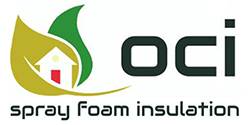In the realm of home improvement, the quest for energy efficiency is a perpetual journey. As homeowners seek ways to enhance insulation and reduce energy costs, do-it-yourself (DIY) projects become increasingly popular. One such endeavor gaining attention is DIY spray foam insulation. This article delves into the world of DIY spray foam insulation, examining its benefits, potential pitfalls, and whether it’s a viable option for the average homeowner.
The Basics of Spray Foam Insulation:
Spray foam insulation is a versatile material that expands upon application, filling gaps and crevices to create an airtight seal. It comes in two main types: open-cell and closed-cell. Open-cell foam is softer and more flexible, while closed-cell foam is denser and provides a higher insulation value. Both types can be applied using a spray foam kit, available at many home improvement stores.
The Appeal of DIY Spray Foam Insulation:
- Cost Savings: One of the primary reasons homeowners opt for DIY spray foam insulation is cost savings. Hiring a professional insulation contractor can be expensive, and many see the DIY approach as a more budget-friendly alternative.
- Flexibility and Convenience: DIY spray foam insulation kits provide a level of convenience and flexibility. Homeowners can work on their schedule, and the kits typically come with everything needed for the application, including the necessary hoses, nozzles, and spray gun.
- Customization: DIY insulation projects allow for customization based on specific needs. Homeowners can target problem areas or insulate hard-to-reach spaces that might be challenging for professionals to access.
The Challenges of DIY Spray Foam Insulation:
- Skill and Experience: While the idea of a DIY project is appealing, applying spray foam insulation requires a certain level of skill and experience. Achieving a uniform application without over-spraying or leaving gaps demands precision that might elude inexperienced individuals.
- Health and Safety Concerns: Spray foam insulation involves working with chemicals, and improper handling can pose health risks. It’s crucial to wear appropriate personal protective equipment (PPE) and follow safety guidelines to minimize exposure to the chemicals.
- Inadequate Coverage: Achieving consistent coverage is crucial for effective insulation. Inadequate coverage can lead to thermal leaks and reduced energy efficiency. Without proper training and experience, DIYers may struggle to achieve the desired insulation thickness.
- Mess and Cleanup: Applying spray foam insulation can be a messy process. Overspray, drips, and uneven application may lead to a cleanup challenge, potentially damaging surrounding areas if not addressed promptly.
- Building Code Compliance: Building codes and regulations vary by location, and DIYers may unintentionally violate these standards. Professionals are well-versed in local codes and can ensure compliance, while DIYers may find themselves facing costly revisions or fines.
Tips for Successful DIY Spray Foam Insulation:
- Educate Yourself: Before embarking on a DIY spray foam insulation project, thoroughly educate yourself on the application process, safety precautions, and potential challenges. Many manufacturers provide detailed instructions and videos to guide users.
- Invest in Quality Products: The market offers a range of spray foam insulation kits, varying in quality and price. Investing in a reputable product ensures better results and minimizes the risk of application issues.
- Safety First: Prioritize safety by wearing appropriate PPE, including gloves, goggles, and a respirator. Adequate ventilation in the workspace is crucial to minimize exposure to fumes.
- Practice in a Controlled Environment: Before tackling larger areas, practice applying spray foam insulation in a controlled environment. This allows you to familiarize yourself with the equipment and refine your technique.
Conclusion:
DIY spray foam insulation can be a cost-effective and rewarding endeavor for homeowners seeking to improve their home’s energy efficiency. However, it is essential to approach this task with caution, considering the potential challenges and risks involved. While some may find success with DIY insulation, others may discover that the complexity of the process requires the expertise of a professional. In the pursuit of a more energy-efficient home, it is crucial to strike a balance between the desire for cost savings and the need for a well-executed insulation solution.

This is a topic which is close to my heart… Cheers! Exactly where are
your contact details though?